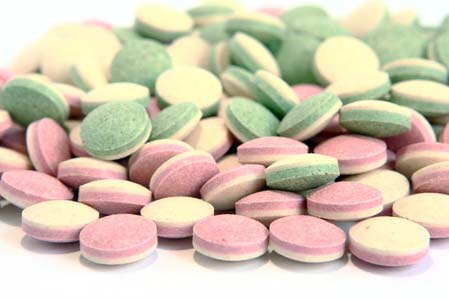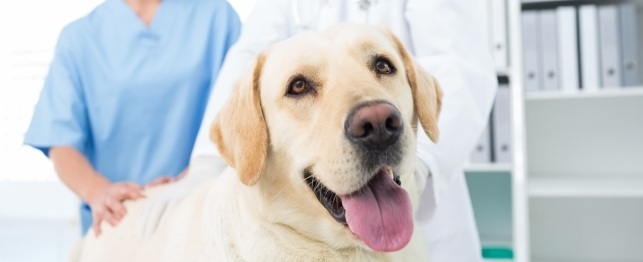Although there are five or more categories of dog skin problems the symptoms of each type overlap the others. Pet owners should watch for hair loss, scaly areas, and swelling. Other common symptoms are redness, rashes, scabs, or drainage. Infected dogs will most often scratch, lick and chew the problem area or rub against furniture and carpeting.
Infections from bacteria can take hold anywhere but often will locate on a canine's chin. The indicators of bacterial infections are red or ulcerated skin, yellow pustules, or crusty patches. Treatment is usually with antiseptics and antibiotics. Often this type of infection is secondary to a hormone imbalance, allergy, or parasites.
Hair loss and circular patches with crusted centers can result from a fungal infection. It is commonly called ringworm and is contagious to humans but highly treatable. The infected areas are found most often on a dog's head and legs but the ringworm may spread. A vet will use an ultraviolet light or obtain a culture for diagnosis. Fungicidal products (shampoos, rinses) are used to treat ringworm and vets may use other topical or systemic medications.
Ear mites and mange are two canine problems caused by parasites. Fleas are common trouble makers and a trigger for the disease called mange. Mange involves itching, crusty areas and hair loss, or itching, red and scaly dermis with round patches of hair loss. Dogs that obsessively scratch their ears likely have ear mites. The mites are hard to spot but there is sometimes dried blood or other discharge inside the ear. Treatment includes medicated dips or shampoos and possibly antibiotics.
As with humans, dogs can develop allergies at any age. Flea saliva is the most common allergen in dogs and provokes intense itching. Dogs may also be allergic to molds, pollens, and house dust, resulting in some type of dermatitis. The allergies often show up as "hot spots." These are areas that a dog constantly scratches and licks. Hot spots can look normal or may appear red and moist. Treatments include flea control, antihistamines, corticosteroids, and immuno-therapy. A change in diet may help.
Hormones get out of balance in dogs when the pituitary, adrenal or thyroid glands over or under secrete its hormone. There is rarely itching involved. What is noticeable is thicker, thinner, or an off-color dermis, and hair loss over both sides of the body. Reproductive hormones can also trigger dog skin problems however, neutering is an effective treatment. Otherwise, a vet will address the primary gland illness (like hypothyroidism).
Dogs do not take well to boredom. Lack of physical activity or mental stimulation may trigger dermal irritations. It is suggested all of a dog's grooming products should be specifically recommended for canines. Seasonal change can be a culprit as well. Some dogs are prone to dry or flaky skin during winter months, just as their owners may be.
Fortunately, most dog skin problems readily show themselves and are highly treatable. There are also precautions that can be taken. Effective flea control is the most obvious one. Dogs also need regular brushing to avoid hair matting, may benefit from hypoallergenic shampoos, and appreciate it when their owners vacuum and keep the house clean.

 Advice from the Breeder: Peggy and Dave Helming, Pouch Cove Newfoundlands
In this excerpt from a 2008 “
Advice from the Breeder: Peggy and Dave Helming, Pouch Cove Newfoundlands
In this excerpt from a 2008 “
 Two Hopeful Canine Cancer Treatments
Preliminary results of research int
Two Hopeful Canine Cancer Treatments
Preliminary results of research int
 Why Does My Dog Eat Grass?
The fact is that even if your dog h
Why Does My Dog Eat Grass?
The fact is that even if your dog h
 How to Have a Trauma-Free Vet Visit For Your Dog
How to Have a Trauma-Free Vet Visit For Your
How to Have a Trauma-Free Vet Visit For Your Dog
How to Have a Trauma-Free Vet Visit For Your
 Risks to Western US Rural Dogs - Cacti, Barbed Wire & Rattlesnakes
Risks to Western US Rural Dogs - Cacti, Barbe
Risks to Western US Rural Dogs - Cacti, Barbed Wire & Rattlesnakes
Risks to Western US Rural Dogs - Cacti, Barbe